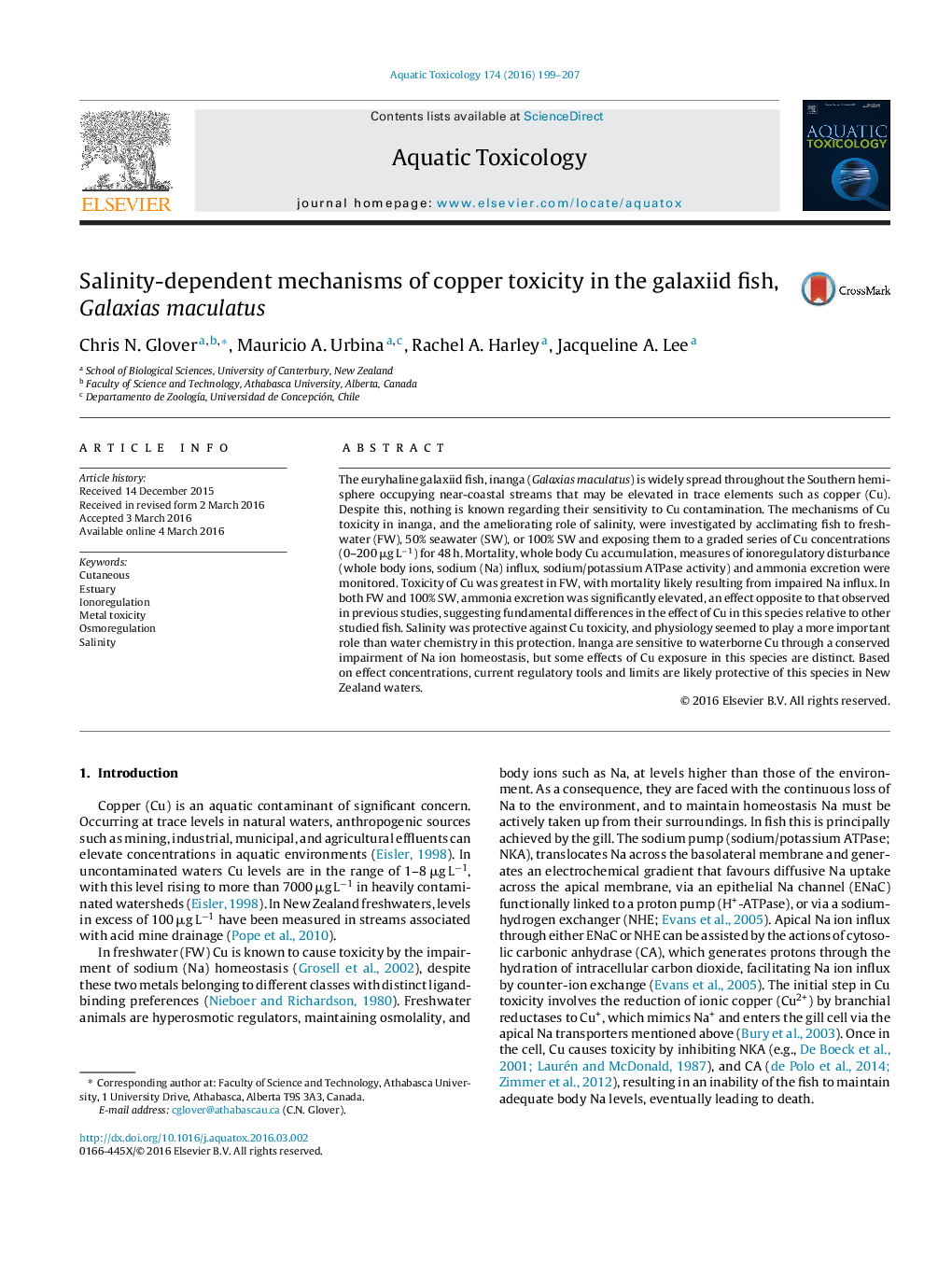| کد مقاله | کد نشریه | سال انتشار | مقاله انگلیسی | نسخه تمام متن |
|---|---|---|---|---|
| 6381919 | 1625931 | 2016 | 9 صفحه PDF | دانلود رایگان |

- Salinity-dependent copper (Cu) toxicity was investigated in a galaxiid fish.
- Cu likely caused toxicity through impaired branchial sodium influx.
- Unusually, Cu increased ammonia loss possibly due to the use of skin for excretion.
- Physiology was more important than water chemistry in shaping toxic response.
The euryhaline galaxiid fish, inanga (Galaxias maculatus) is widely spread throughout the Southern hemisphere occupying near-coastal streams that may be elevated in trace elements such as copper (Cu). Despite this, nothing is known regarding their sensitivity to Cu contamination. The mechanisms of Cu toxicity in inanga, and the ameliorating role of salinity, were investigated by acclimating fish to freshwater (FW), 50% seawater (SW), or 100% SW and exposing them to a graded series of Cu concentrations (0-200 μg Lâ1) for 48 h. Mortality, whole body Cu accumulation, measures of ionoregulatory disturbance (whole body ions, sodium (Na) influx, sodium/potassium ATPase activity) and ammonia excretion were monitored. Toxicity of Cu was greatest in FW, with mortality likely resulting from impaired Na influx. In both FW and 100% SW, ammonia excretion was significantly elevated, an effect opposite to that observed in previous studies, suggesting fundamental differences in the effect of Cu in this species relative to other studied fish. Salinity was protective against Cu toxicity, and physiology seemed to play a more important role than water chemistry in this protection. Inanga are sensitive to waterborne Cu through a conserved impairment of Na ion homeostasis, but some effects of Cu exposure in this species are distinct. Based on effect concentrations, current regulatory tools and limits are likely protective of this species in New Zealand waters.
Journal: Aquatic Toxicology - Volume 174, May 2016, Pages 199-207